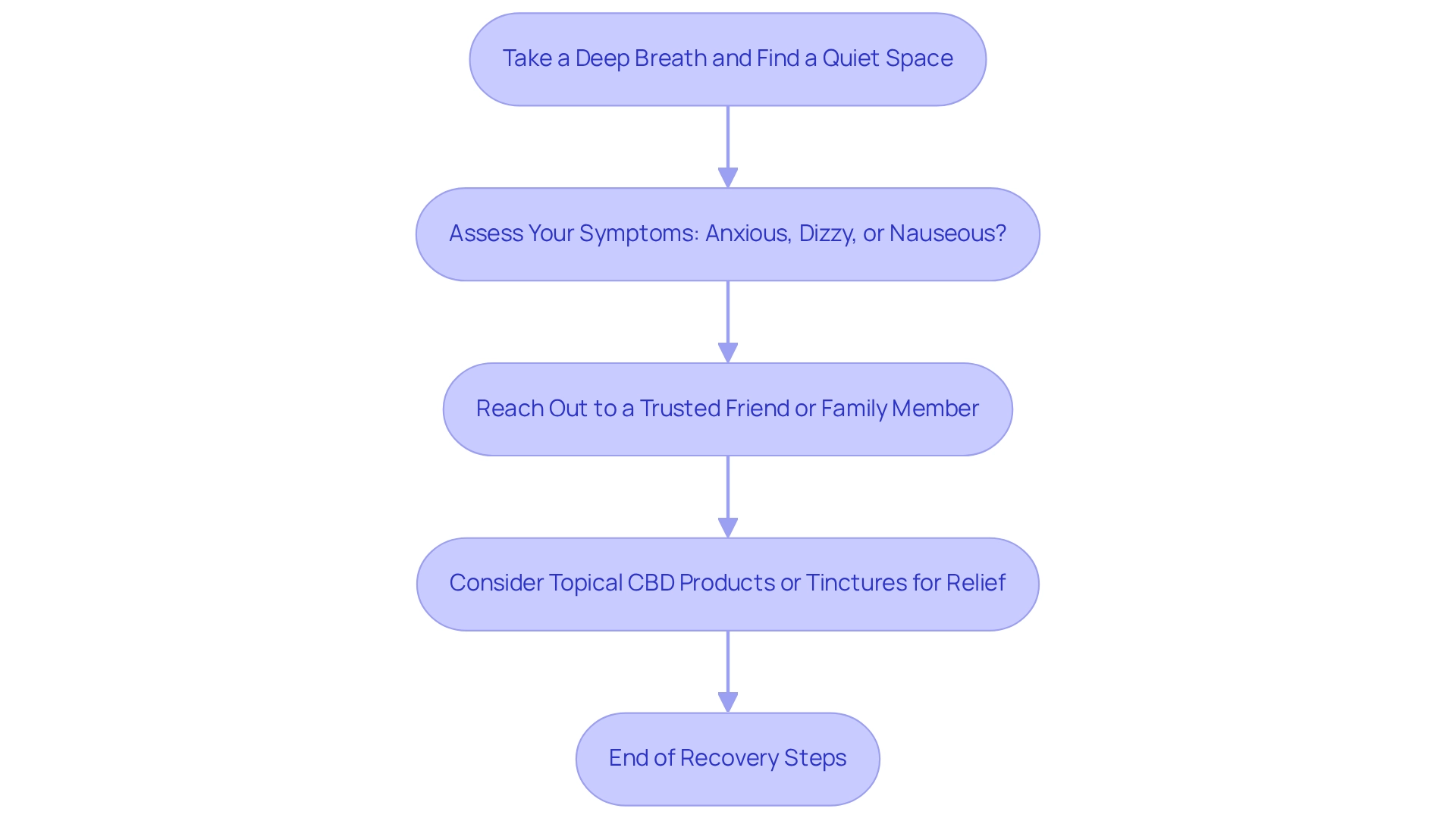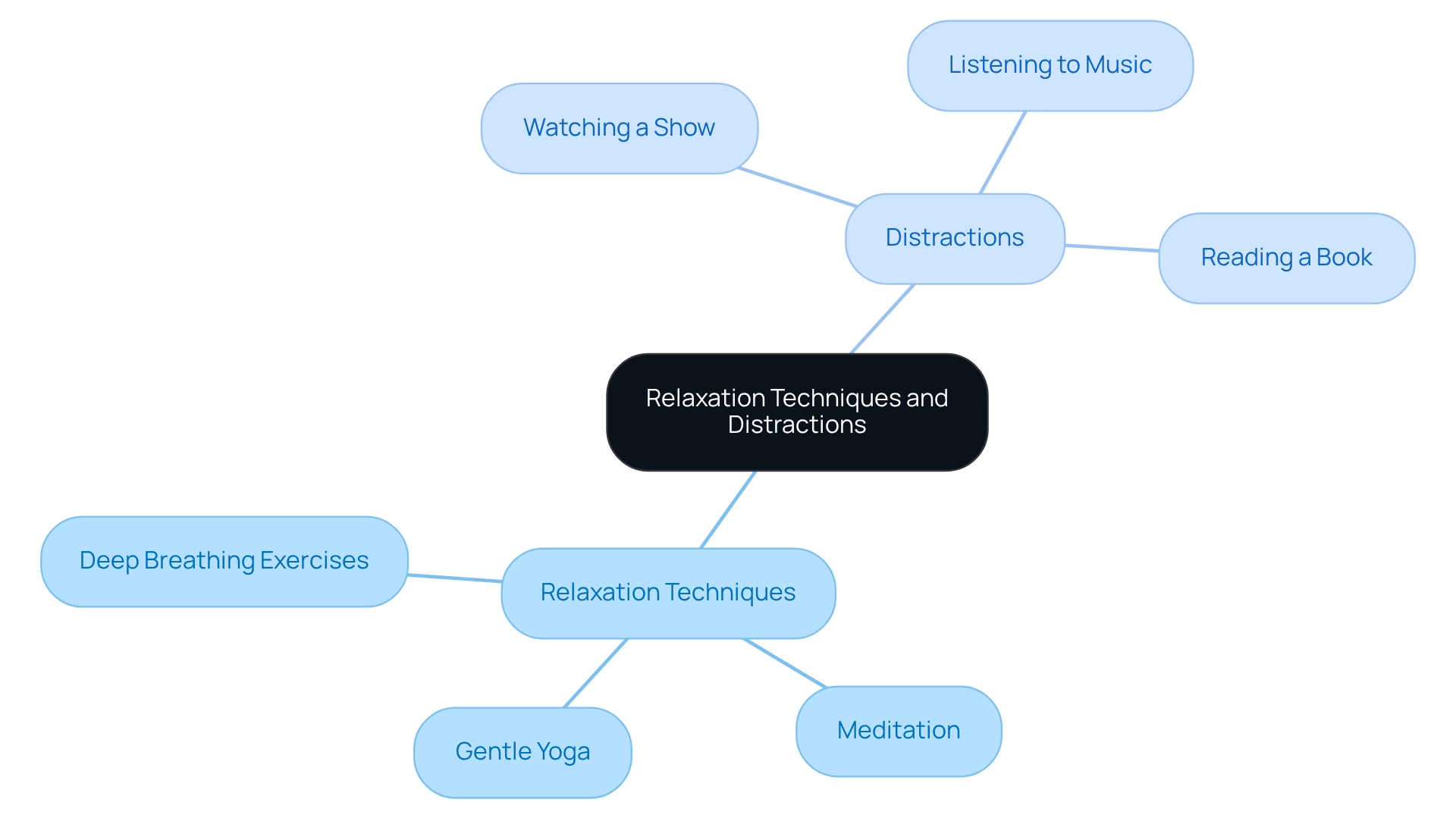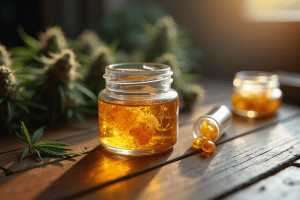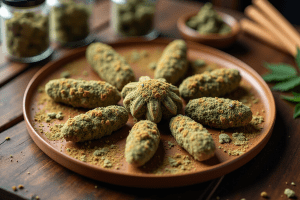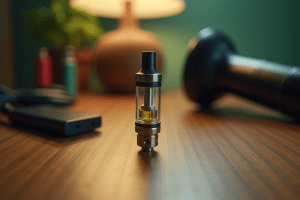Overview
Recovering from cannabis edibles can be a challenging experience, but there are essential steps we can take together to ease the process.
- First, it’s important to assess how you’re feeling. Are you experiencing discomfort? Understanding your symptoms is the first step towards relief.
- Next, remember to hydrate; water can be your best friend during this time.
- Additionally, utilizing relaxation techniques, such as deep breathing, can help calm your mind and body.
You might find that light snacks also play a role in your recovery. These small actions can significantly alleviate adverse effects and promote a smoother recovery process.
We encourage you to reflect on your experiences and consider how these strategies can support you. Together, we can navigate this journey toward feeling better.
Introduction
In a world where cannabis consumption is becoming increasingly mainstream, edibles have emerged as a popular choice for many users. These infused treats offer a unique experience, distinct from traditional smoking or vaping. They are marked by delayed effects and prolonged durations that can last for hours. However, as we embark on this journey into the realm of cannabis edibles, it’s important to acknowledge that it comes with its complexities.
As we navigate the array of flavors and dosages together, understanding the potential benefits and pitfalls becomes crucial. Have you ever wondered how edibles could enhance your creativity or help manage unexpected discomfort? This article delves into the essential knowledge and strategies needed to enjoy cannabis edibles responsibly. By doing so, we can ensure a positive experience while minimizing risks, allowing us to embrace this new world with confidence.
Understand Cannabis Edibles and Their Effects
Cannabis treats are food items infused with cannabinoids, primarily THC (tetrahydrocannabinol) and CBD (cannabidiol). Unlike smoking or vaping, which introduce cannabinoids directly into the bloodstream, food products must be digested. This leads to a delayed onset of effects—typically ranging from 30 minutes to 2 hours. The length of these outcomes can be considerable, often extending up to 12 hours or beyond, depending on dosage and personal metabolism.
The typical results of cannabis-infused products include relaxation, euphoria, and increased sensory awareness. These effects can be especially advantageous for boosting creativity. Strains high in THC, such as Durban Poison, Green Crack, and Super Lemon Haze, are known to stimulate imagination and spark creative juices. However, it’s important to recognize that food products can also induce anxiety, paranoia, and physical discomfort, particularly when consumed in excess. This duality underscores the importance for buyers, especially beginners, to fully understand these impacts.
A recent study revealed that one in five individuals expressed interest in trying cannabis-infused drinks, reflecting a growing curiosity about these food products. This statistic highlights the necessity for new users to approach them with caution and a clear awareness of their potential effects.
Moreover, extended use of such products may present dangers, particularly for individuals with liver issues. It is essential for new users to consider this when establishing safe consumption habits. A case study titled “Consumer Awareness of Food Products” found that many users underestimate the strength and risks associated with marijuana-infused treats, often due to their appealing shapes. The study concluded that increasing consumer awareness can help prevent misuse and promote responsible consumption.
Understanding how cannabis-infused foods function is crucial for setting realistic expectations. THC and CBD interact with the body’s endocannabinoid system, leading to varied responses that can differ significantly among individuals. For new consumers, it is vital to grasp that the outcomes of these compounds can vary based on individual physiology and the specific food item consumed.
To help navigate the experience with edibles, joining support groups can be beneficial, as noted by content writer Brian Moore. These groups provide a space for sharing experiences and strategies for managing the effects of consumables. As the market for marijuana-infused treats continues to expand, with a notable rise in interest, it’s important for buyers to educate themselves on how to recover from edibles. Having plans ready for relief can be invaluable if discomfort arises.
Additionally, exploring marijuana-infused treats can be a creative endeavor, allowing individuals to incorporate them into their artistic practices responsibly. For further insights, we encourage consumers to delve into resources related to legalization and policy reform, which can offer valuable context for informed consumption. Together, let’s navigate this journey with care and understanding.
Stay Calm and Assess Your Situation
If you’re feeling overwhelmed after consuming cannabis products, it’s essential to know that recovery is possible. Take a deep breath and remind yourself that these sensations are temporary. Find a quiet, comfortable space where you can truly relax.
Assess your symptoms: Are you feeling anxious, dizzy, or nauseous? Understanding your specific discomfort can offer valuable insights into how to recover from edibles. If you can, reach out to a trusted friend or family member to share your experience. Having someone to reassure you can significantly ease your anxiety.
Additionally, consider the soothing benefits of topical CBD products or tinctures. These can provide relief and enhance your overall wellness during this time. Remember, you’re not alone in this journey; together, we can explore the best ways to feel better.
Hydrate and Nourish Your Body
Hydration is vital for learning how to recover from edibles and understanding the effects of infused treats. By consuming plenty of water, herbal teas, or electrolyte-rich drinks, you can effectively combat dehydration and aid in flushing THC from your system. While research shows that hydration is crucial for recovery, it’s important to note that limited studies exist due to federal restrictions on cannabis research. Interestingly, frequent marijuana users may test positive even 70 days later, which highlights the need for effective recovery strategies.
To support your recovery, consider opting for light, nutritious snacks. Foods rich in carbohydrates, like crackers or toast, can help stabilize blood sugar levels, while potassium-rich fruits such as bananas are excellent for replenishing essential nutrients. It’s wise to avoid caffeine and alcohol, as these can exacerbate dehydration and increase anxiety.
A representative from Paramount Recovery Center emphasizes, “Renowned for its exhaustive and customizable programs, Paramount Recovery Center situated in Massachusetts dedicates itself to delivering a full continuum of care for individuals eager to pursue healthier lifestyles.” This statement underscores the importance of seeking professional support when needed.
Incorporating these dietary strategies can significantly enhance your recovery process after consuming edibles. If you find yourself needing further assistance, remember that you can call or request a callback for care and support from Paramount Recovery Centers. Together, we can ensure you have access to the resources necessary for a successful recovery.
Utilize Relaxation Techniques and Distractions
To help alleviate discomfort from migraines, have you considered utilizing relaxation techniques? Practices such as deep breathing exercises, meditation, or gentle yoga can be incredibly beneficial. These methods not only reduce anxiety but also promote a sense of calm—essential since migraines often involve neurological changes that heighten sensitivity to stress.
Additionally, engaging in light activities that you enjoy can serve as a helpful distraction. Whether it’s watching a favorite show, listening to music, or diving into a good book, keeping your mind occupied can shift your focus away from negative feelings. This approach makes the experience more manageable and ultimately aids in relieving migraine symptoms.
Together, let’s explore these options and find what works best for you. Remember, you’re not alone in this journey, and there are supportive strategies available to help you feel better.
Conclusion
Exploring cannabis edibles reveals a complex landscape filled with both potential benefits and pitfalls. Understanding how these infused treats work, including their delayed effects and prolonged durations, is vital for each of us. With a careful approach, we can enhance creativity and manage discomfort effectively. However, it’s essential to be aware of dosage and personal tolerance, especially if you are new to edibles.
To navigate any overwhelming sensations after consumption, employing relaxation techniques, staying hydrated, and nourishing our bodies can significantly aid recovery. Engaging in calming activities and seeking support from trusted companions can enhance our experience and alleviate anxiety. It is crucial to remain informed and prepared, as knowledge empowers us to enjoy cannabis edibles responsibly while minimizing risks.
As the market for cannabis edibles continues to grow, fostering consumer awareness is essential. By understanding the effects and incorporating effective recovery strategies, we can embrace this evolving world with confidence and creativity. Ultimately, responsible consumption and education pave the way for a positive experience, allowing us to enjoy cannabis edibles safely and beneficially.
Frequently Asked Questions
What are cannabis treats?
Cannabis treats are food items infused with cannabinoids, primarily THC (tetrahydrocannabinol) and CBD (cannabidiol).
How do cannabis treats differ from smoking or vaping?
Unlike smoking or vaping, which introduce cannabinoids directly into the bloodstream, cannabis treats must be digested, leading to a delayed onset of effects.
How long does it typically take to feel the effects of cannabis treats?
The effects of cannabis treats typically take between 30 minutes to 2 hours to onset.
How long can the effects of cannabis-infused products last?
The effects can last up to 12 hours or longer, depending on dosage and personal metabolism.
What are the common effects of cannabis-infused products?
Common effects include relaxation, euphoria, and increased sensory awareness, which can be beneficial for creativity.
Are there any risks associated with consuming cannabis treats?
Yes, cannabis treats can induce anxiety, paranoia, and physical discomfort, especially when consumed in excess.
What should beginners know before trying cannabis-infused products?
Beginners should fully understand the potential effects and risks associated with cannabis treats and approach them with caution.
What did a recent study reveal about interest in cannabis-infused drinks?
The study found that one in five individuals expressed interest in trying cannabis-infused drinks, indicating a growing curiosity about these products.
Who should be cautious when using cannabis-infused products?
Individuals with liver issues should be particularly cautious, as extended use may present dangers.
Why is consumer awareness important regarding cannabis treats?
Many users underestimate the strength and risks of marijuana-infused treats, often due to their appealing shapes, making increased consumer awareness crucial to prevent misuse.
How do THC and CBD interact with the body?
THC and CBD interact with the body’s endocannabinoid system, leading to varied responses that can differ significantly among individuals.
What can new consumers do to manage their experience with edibles?
New consumers can benefit from joining support groups to share experiences and strategies for managing the effects of cannabis edibles.
How can exploring marijuana-infused treats be a creative endeavor?
Individuals can incorporate cannabis treats into their artistic practices responsibly, allowing for creative exploration.
What resources can help consumers navigate cannabis consumption?
Consumers are encouraged to explore resources related to legalization and policy reform for valuable context on informed consumption.
Get Your Medical Card
Connect with a licensed physician online in minutes


